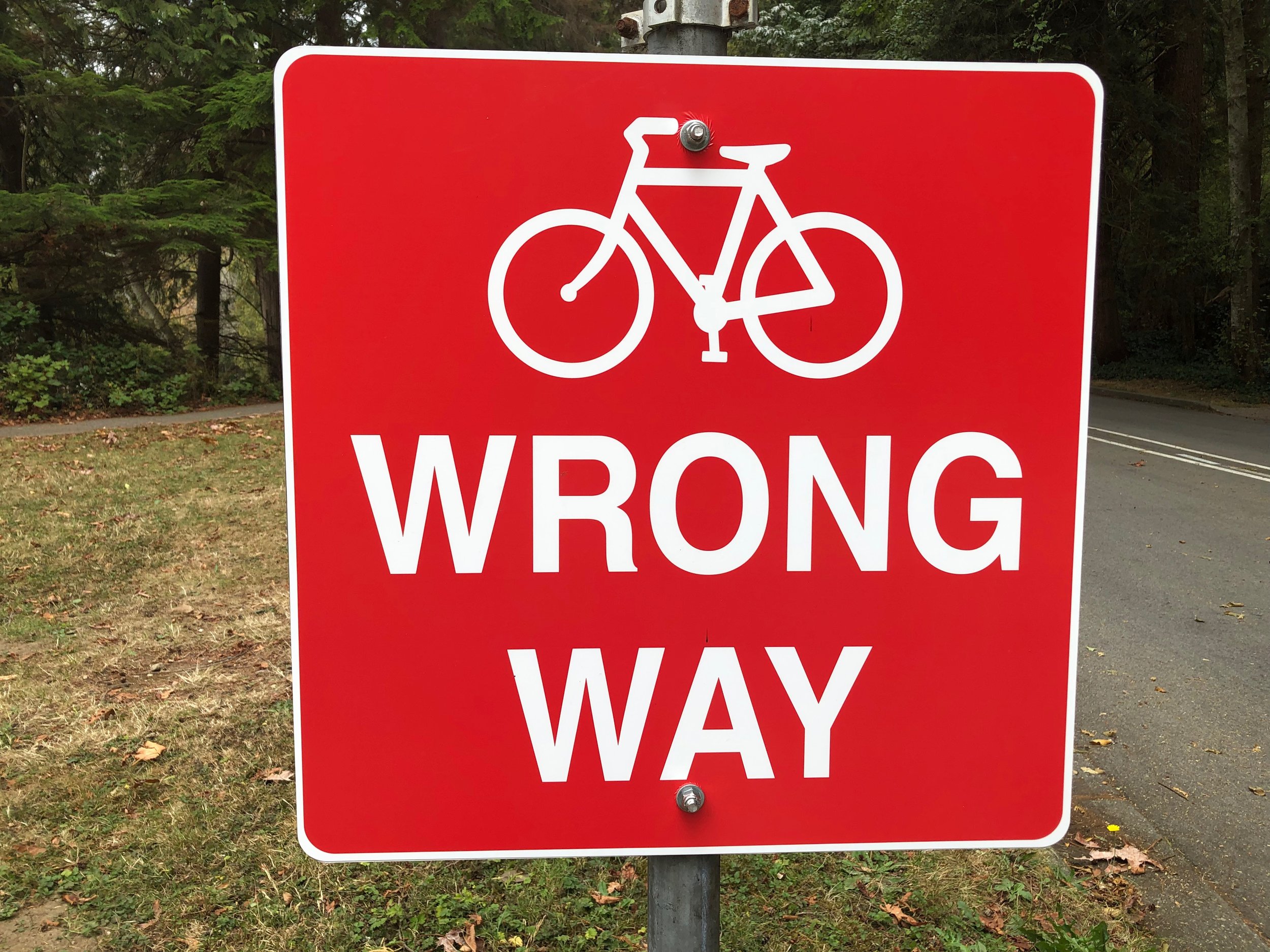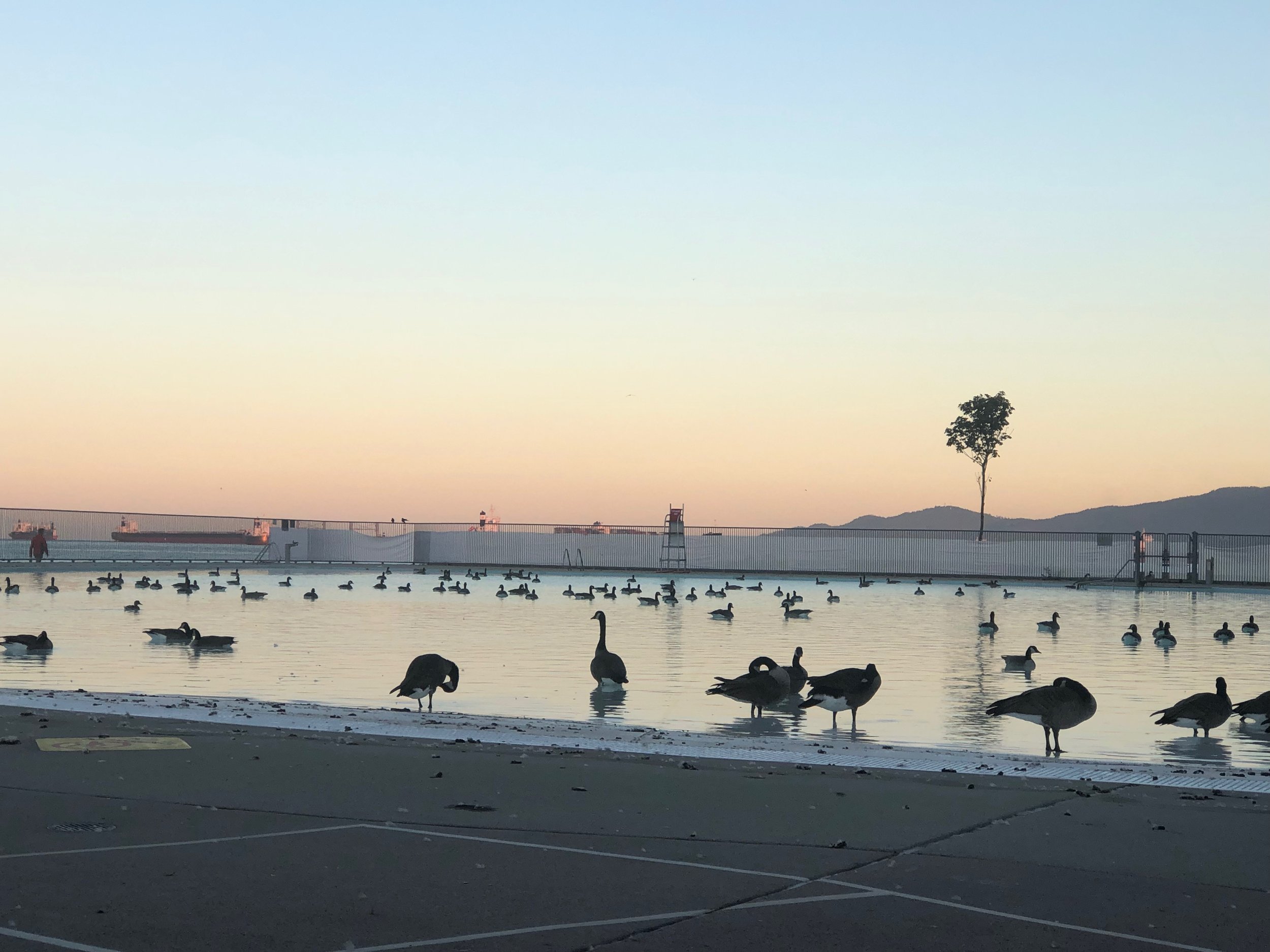STANLEY PARK NOTEBOOK
/by Jacqui Birchall
(click photos to enlarge)
ANOTHER LOST LAGOON CARP DIE-OFF
Once again the water in Lost Lagoon is causing concern.
It looks very unhealthy and dead carp are visible in the Lagoon. At one point the carp were congregating by the concrete bridge, an unusual sight. A park ranger told me that the carp sometimes move to the south end of the lagoon if there is salinization in the north end, where sea water sometimes breaches the lagoon.
The scummy, polluted surface of Lost Lagoon will give you a hint as to why the carp are dying in droves.
Before the Stanley Park Causeway was constructed the Lagoon was a tidal mud flat. The lagoon used to become “lost” or disappear at low tide.
The Park Board recently released the following statement regarding the state of the Lagoon.
“Over the past few days, we have received questions from concerned citizens about the number of dead carp seen in Lost Lagoon. A carp die-off event occurred over the same period of time last year during the weekend of September 18, 2021.
“At that time, the Vancouver Board of Parks and Recreation directed water quality testing (performed by Stanley Park Ecological Society - SPES), as well as necropsies on a few of the fish. While the receiving lab could not pinpoint an exact cause, staff believe the fish die off is related to the overall water quality of Lost Lagoon, mainly low dissolved oxygen and high salinity (from adjacent ocean in Coal Harbour) levels. SPES has a continuing water quality monitoring program looking at current conditions that may shed light on what is shaping to be a yearly occurrence.
“Beyond this incident, staff have been aware of the ecological issues and challenges at Lost Lagoon for some time, and over the last few years have been exploring various feasible solutions to restore the area. Lost Lagoon is an artificially isolated body of water created in the early 1900s when the causeway was built. Formerly a tidal ecosystem, the berm built for Highway 99 turned the lagoon into a pond for recreational and aesthetic purposes. Because it is isolated, infilling, and now only approximately a metre deep (with much of the shoreline non-naturalized), it is considered an ecologically poor habitat, vulnerable to sea level rise and other events.”
You can find a news report from last year here.
COYOTE UPDATE
I was delighted to read that the two people who were arrested last year for feeding coyotes in Stanley Park have now been charged. CBC’s Chad Pawson frequently writes about Stanley Park issues. Read his report on the arrest here.
NO GHOST TRAIN - AGAIN
Once again the Stanley Park Ghost Train has been cancelled.
This time the cancellation is due to mechanical issues. With only one company making parts for the engines, and failed safety tests by Technical Safety BC, the cancellation will be disappointing to the many families that enjoy the spooky experience.
There are few specialists out there who are able to provide the very specialized service and maintenance the trains require. An engineering team from Simon Fraser University is looking into ways to update the rather elderly fleet and perhaps bring in electric engines.
The train was cancelled for two years because of the pandemic and last year because of coyote concerns. Management is hopeful the trains will be repaired in time for the Bright Nights holiday event.
A NEW PLAQUE FOR JOE FORTES
Not quite in the park, but so worthy of noting. A new plaque honoring Joe Fortes will be installed at Burnaby and Beach at noon on October 1.
The Vancouver Heritage Foundation is including this plaque in their Places That Matter series at English Bay Beach. After the unveiling there will be a short walking tour led by Lisa Anne Smith, who has written a book about Joe Fortes. It is more than 100 years since Joe Fortes passed and yet he continues to be revered.
Loopers were everywhere this year, and may be back again next summer.
LOOPER MOTHS
This year the infestation seemed worse than previous years.
On my early morning walks in September the seawall was carpeted in dead and dying moths, as was the adjacent ocean. They covered park signs, buildings and of course the conifers - hemlock, Douglas fir and red cedar.
The moths are reported to be cyclical, with the cycle lasting one to four years. Let us hope the cycle is ending. The trees are battling not only the moths but severe drought conditions too.
WEEPING WILLOWS
If you are a regular visitor to Lost Lagoon you will have noticed how large branches are falling from the Weeping Willows and an entire willow tree has fallen.
Weeping Willows are not native to the park. They were planted for aesthetic value, but it is reported that they help to reduce erosion, anchoring the shoreline of Lost Lagoon. When they fall, all is not as lost as we may think. The fallen trees, or even just their branches, provide a rich habitat.
Volunteers from SPES removing invasive plant species.
CLEARING OUT INVASIVE SPECIES
You may have noticed the energetic groups clearing invasive plants in the park. They are very evident around Lost Lagoon right now as they remove the invasive Himalayan Blackberry.
So delighted to read the latest from the Stanley Park Ecology Society (SPES):
“We have been removing invasive species around Lost Lagoon and Ceperley Meadow for the past few months and on October 8th, we will begin to replace them by planting 630 native trees and shrubs.
“We are honoured to be one of 20 U.S. and Canadian cities selected to receive a TD Green Space Grant from TD and Arbor Day Foundation for our Arbor Day planting plans! This grant will support innovative urban greening and tree planting in Stanley Park to deliver environmentally equitable solutions.”
Learn more about this important volunteer work, and join the team here.
END OF SUMMER NOTES
Bike Signage … As summer rolled to an end, new bike signage was installed at various points in the park and the seawall bike lane now boasts a bright red boarder.
Geese In The Pool … Canada geese took over the Second Beach pool right after Labour Day. They feel safe in the enclosure which is chock full at dawn. I was informed by staff the pool is not drained to prevent cracking in cold weather.
Concession Closed … The Third Beach Concession is not closed because the manager wants to close it. Lack of staff is the reason. Second Beach Concession is open as usual.
Slug News … Slug season is interesting and the other day I was horrified when I came across two slugs face deep in a pile of poop. Gardening friend Susie enlightened me! Slugs are great removers of feces. If you want to protect your plants from slugs, place your pet feces around the plants!
The Clean Team … Shortly after dawn one day, I ran into the team that services the park washrooms. Wow, I said, you are early risers. We start at 5 a.m., they informed me. The park washrooms are clean and much appreciated.
Thirsty Trees … I observed city employees using a water truck to water trees and plants in the area of Lagoon Drive and Chilco one morning. So happy to see it, but we need a concerted tree watering campaign in the West End and Stanley Park. So many young trees in the West End are in distress.
Later this month I’m off for my annual trip to points south, returning in the spring to resume this report. In the meantime, journalist Nate Lewis will return (regular readers will recall he took over this space last winter as well). Welcome back Nate.
See you all next year!
PLEASE SUPPORT YOUR WEST END - COAL HARBOUR COMMUNITY MEDIA
The West End Journal, including “Stanley Park Notebook”, is made possible by local advertising and monthly contributions from our Faithful Readers Circle. If you would like to support your community media, please visit our fundraising site here to contribute any amount from $5 a month up. If you have a business in the West End / Coal Harbour neighbourhood, check out our advertising rates and information page here.
Thank you!
Kevin Dale McKeown
Editor & Publisher
editor@thewestendjournal.ca








